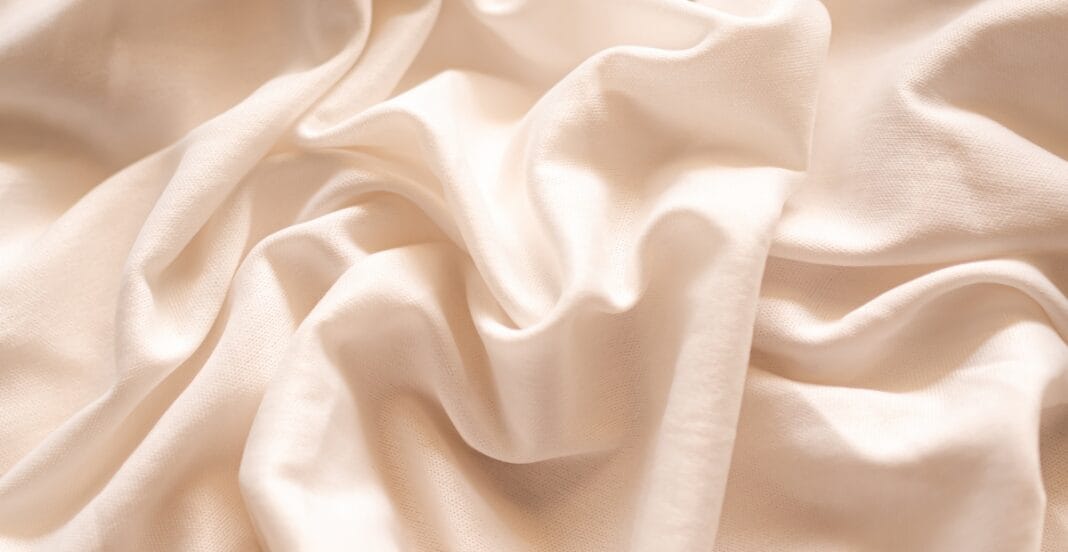Did you experience a feeling of itching after wearing a brand new shirt? It could be due to the harsh chemicals found in ordinary cotton. Now, imagine wearing a soft and breathable fabric that’s gentle on your skin and kind to the planet. This is exactly where organic cotton fabric shines. It’s not just a trend—it’s a healthier, more sustainable choice for your wardrobe.
As we move into 2025 the people are seeking healthier lifestyles. They’re looking for items that are healthy, hygienic and healthy for the Earth. One of the best choices you could take this season is to switch into organic cotton fabrics. It’s not just a fashion trend. It’s a sustainable, smart trend.
Table of contents
- What Is Organic Cotton Fabric?
- How Organic Cotton Fabric Is Made
- Why 2025 Is the Year for Organic Cotton Fabric
- Health Benefits of Organic Cotton Fabric
- Environmental Impact of Organic Cotton Fabric
- Organic Cotton Fabric in comparison to. Regular Cotton: A Clear Winner
- Cost Myths: Is Organic Cotton Fabric Really Expensive?
- Where to Buy and What to Look For in 2025
- Conclusion
- FAQs
What Is Organic Cotton Fabric?
Organic cotton fabric is cotton that is grown with no harmful chemicals. Farmers don’t apply pesticides, herbicides or seeds that have been genetically modified. Instead, they adhere to natural methods. They include rotation of crops composting, as well as the natural control of pests.
The fabric is similar to regular cotton, but more luxurious. It’s the same feeling and sometimes is even more soft. However, it is beneficial to animals, humans and the Earth. It’s grown as nature was meant to.
In a nutshell, organic cotton is natural, safe and long-lasting.

How Organic Cotton Fabric Is Made
Let’s take a look at how this incredible fabric was created.
- Planting The farmers use non-GMO seeds. They do not treat them with chemical.
- Growing No toxic sprays. Insects are managed naturally. Farmers make use of compost and rotate their crops.
- Harvesting The cotton is harvested by hand to ensure that there is no damage or pollution.
- Processing Fabrics use water-based dyes and stay clear of harmful chemicals. This safeguards both workers and the environment.
- Fabric making Machines transform yarns of cotton before they weave them into fabric.
- Final product The result is a clean, soft and comfortable cotton clothing.
The entire process is safe for the environmental. It also conserves energy and water. It also makes sure that the cotton is pure.
Why 2025 Is the Year for Organic Cotton Fabric
Why is this happening now? What is the reason the organic cotton textile being praised more in 2025?
Because we’re facing big problems. Climate change. Pollution. Skin allergies. Fashion waste.
Consumers are awakening. They are looking for choices that reflect their ideals. Brands of clothing are paying attention. A lot of them are now using organic fabrics in their merchandise. The government is encouraging more sustainable agriculture.
In 2025, organic food is more than just good. It’s crucial.
The term “eco-conscious” is not just a trendy word. It’s a necessity for survival. Organic cotton provides a option that’s trendy and eco-friendly.
Health Benefits of Organic Cotton Fabric
You put on clothes all day long. They get on your skin constantly. This is why the fabric you choose matters.
Here’s the reason why natural cotton is more healthy:
- No chemical No bleach, and no dyes that can cause rashes.
- Hypoallergenic It does not trigger asthma or allergies.
- Soft and airy: Helps keep your skin dry and cool.
- No toxic substances: Children and those with sensitive skin types are secure.
Many pediatricians suggest organic cotton as a baby’s clothing. Why? Because babies’ skin is thinner. They absorb more of what they touch.
The switch to natural cotton decreases the possibility of irritation on your skin. It’s peace of mind each time you dress.
Environmental Impact of Organic Cotton Fabric
Nature will be grateful to you each when you select organic cotton for your fabric.
Let’s look at the advantages:
| Area | Organic Cotton Impact |
|---|---|
| Water | It uses 91 percent less water than regular cotton. |
| Soil | Maintains soil health and makes it fertile |
| Air | Cleaner air and less CO2 |
| Wildlife | Doesn’t cause harm to pollinators or insects. |
| Waste | Creates less waste textile |
The absence of chemicals in farming helps protect wildlife and water. Also, it helps farmers stay well. Because the fabric is able to break down in nature, it will not sit in the landfill for a long time.
In a world that is fighting pollution organic cotton is an oasis of fresh air.
Organic Cotton Fabric in comparison to. Regular Cotton: A Clear Winner
It’s time to do a side-by-side comparison.
| Feature | Organic Cotton | Regular Cotton |
|---|---|---|
| Chemicals | None | Lots |
| Skin security | Excellent | It is often the cause of rashes. |
| Environmental impact | Low | High |
| Water use | Efficient | Wasteful |
| Cost | A bit more | Lower upfront cost |
| Value over the long-term | Higher | Lower |
It is evident that the organic cotton material has a clear advantage in every category. It’s possible that it will cost a bit more. But what you receive in return–health, comfort and morality–is worth it all.
Cost Myths: Is Organic Cotton Fabric Really Expensive?
A lot of people believe that organic food is expensive. However, that’s no longer the case.
As demand increases and prices rising, prices are increasing. Consider the situation as follows:
- You spend less money since it will last longer.
- You see fewer doctors since it’s safer to your skin.
- You’re in favor of fair wages and secure farms.
In actuality, purchasing organic cotton is a good investment. It’s like spending a little more now and saving more later.
A lot of local and online stores are now offering affordable organic clothing. Discounts and sales are common. Therefore, you don’t need to blow your budget.
Where to Buy and What to Look For in 2025
Finding organic cotton is simple if you know what you are looking for.
Find the following certifications:
- GOTS (Global Organic Textile Standard)
- OEKO-TEX(r)
- USDA Organic
- Fair Trade Certified
They prove that your fabric is organic. It also proves that the workers were treated with respect.
The best places to purchase in 2025
- Brands that are sustainable, such as Patagonia, Pact, and People Tree
- Online marketplaces such as Etsy and EarthHero
- Local eco-friendly products and cooperatives of farmers
Be a smart shopper. Look over the labels. Read reviews. Make sure you support brands that care.
Conclusion
Change begins with a simple decision. The clothes you put on can influence the world around you.
If you select organic cotton fabric it helps safeguard your health, aid farmers, and contribute to the healing of the earth. It’s not just a piece of fabric. It’s an assertion.
In 2025 take the right decision in 2025. Join the millions who are choosing organic. You’ll not only look great, but you’ll feel great too.
Every purchase counts as a vote to choose the future you would like to be living in. Therefore, make your choices carefully. Select organic. Read more Cotton Fabric Rolls
FAQs
Yes! It’s hypoallergenic and free of harmful chemicals that can create reactions.
Absolutely. Clean them gently with cold water. They last longer and remain soft.
It promotes ethical farming and fair pay. Additionally, it is more durable than regular cotton.


